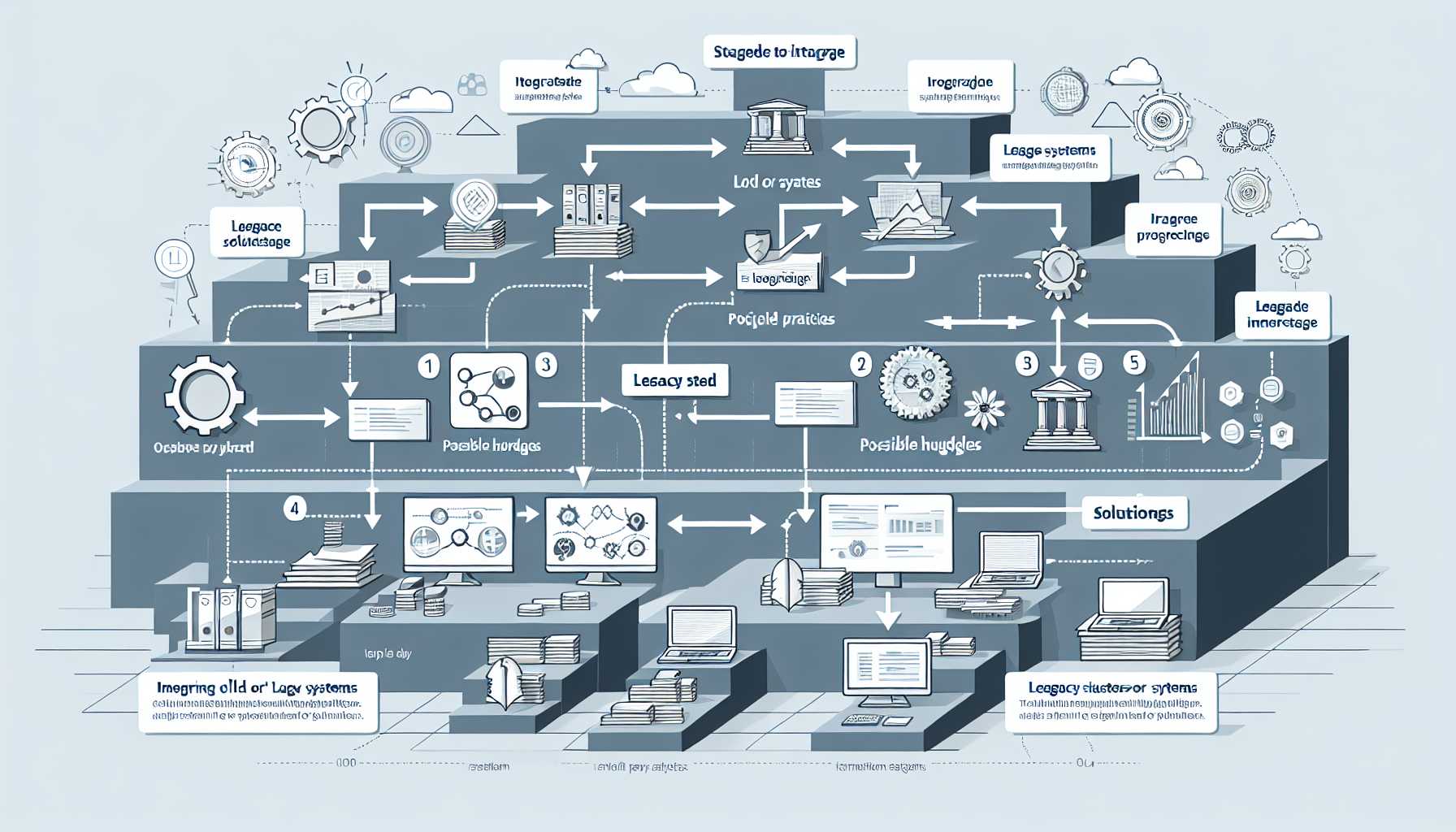Welcome back, product champion. Integrating legacy systems in new products can feel like threading a needle while running a marathon. From my experience, skillful navigation through the complex maze of old and new technologies is essential for success. Allow me to share my strategies and war stories in legacy system integration.
The Legacy System Quandary
Legacy systems pose significant challenges; they’re often critical to day-to-day operations but built on outdated technology. Integration challenges include compatibility issues, data silos, and the risk of service disruption.
My first foray into managing legacy system integration was early in my career when I was tasked to oversee the merger of an antiquated customer database with a cutting-edge CRM system. The complexity was daunting, but it revealed the importance of meticulous planning and strategy.
Key Strategies for Legacy System Integration
The key to successful integration lies in understanding the limitations and capabilities of both the legacy system and the new product.
1. Conduct a Thorough Assessment:
Start with a comprehensive audit of the legacy system. Assess its functionalities, dependencies, and the business processes it supports. Understanding the intricacies is vital to a smooth integration.
2. Prioritize Data Integrity and Security:
Migrating data can be fraught with risks. Ensure data integrity by validating data mappings and perform extensive testing. Establishing strict security protocols is non-negotiable, especially when working with sensitive information.
3. Utilize Middleware for Seamless Communication:
Middlewares can act as a bridge between the old and new systems. They abstract the complexities and provide a unified interface for communication. In one project, using a middleware solution saved us months of work and provided the flexibility needed for future integrations.
4. Adopt an Incremental Integration Approach:
Rather than a big bang approach, break down the integration into manageable pieces. This incremental strategy reduces risk and allows for early detection and correction of issues.
5. Ensure Scalability and Maintainability:
Build the new system with scalability in mind. Compatibility with additional systems or modules is crucial for future growth. Documentation and maintainability should be a primary focus to alleviate the pains for the next generation of product managers.
Integration Frameworks & Methodologies
Over the years, I’ve relied on a few key frameworks and methodologies to help guide the integration process:
The EAI (Enterprise Application Integration) Framework:
Essential for understanding the landscape of legacy systems and how they can be integrated or replaced. The EAI framework provides a set of guidelines and best practices for building a cohesive system architecture.
Service-Oriented Architecture (SOA):
SOA’s modular approach allows for integrating disparate systems with well-defined interfaces. This methodology was pivotal when I led a project integrating multiple legacy systems with a cloud-based platform.
DevOps and Agile Methodologies:
Integration projects can benefit from Agile’s iterative nature and DevOps’ emphasis on automation and continuous improvement. These methodologies encourage collaboration and adaptability, crucial when dealing with the unpredictability of legacy systems.
Case Studies and Learnings
Throughout my career, I’ve observed common patterns in successful legacy integrations. Here are a few insights:
Understand Legacy Culture:
Organizational culture around legacy systems can be resistant to change. It’s vital to engage stakeholders early on and help them understand the benefits of the new system. In one instance, conducting workshops and offering detailed demonstrations proved key to gaining buy-in from a hesitant sales team.
Invest in Training and Support:
Legacy system operators may have years, if not decades, of experience with their tools. Providing comprehensive training on the new system is essential for a smooth transition, as I learned when leading a cross-functional team through a complex ERP integration.
Monitor Post-Integration:
Integration isn’t over when the new system goes live. Monitoring performance and gathering user feedback is critical for continued improvement and adoption. Post-launch support was one area we could have improved upon; in hindsight, a dedicated team would have been beneficial to address immediate issues as they arose.
Conclusion:
Legacy system integration is an art that balances respect for the past with the needs of the future. Understanding your systems, building flexible architectures, maintaining clear communication, and adopting a phased approach are key to a symbiotic coexistence of legacy and new systems.
I’d love to hear your stories and tactics when facing the challenge of legacy systems. What frameworks have you found successful? Any pitfalls to avoid? Please share your insights below.

